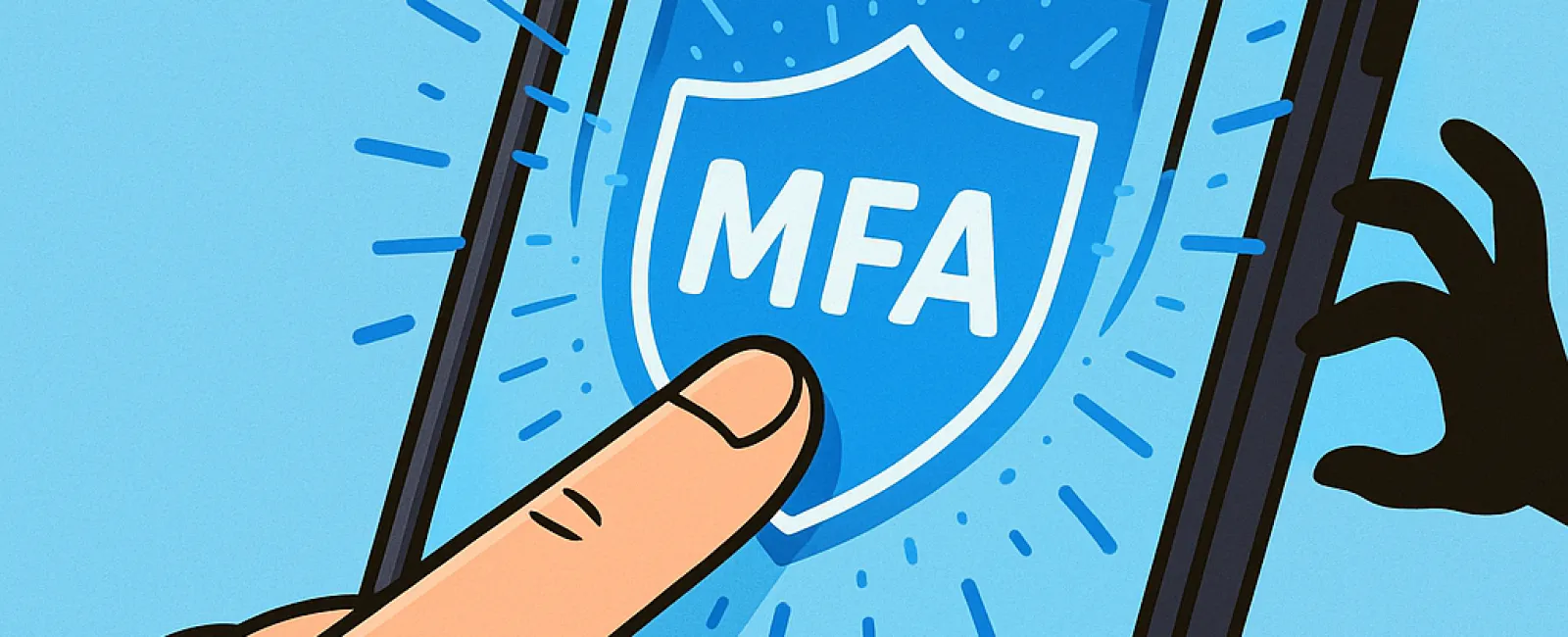October 27, 2025
Just like you wouldn't hit the road without buckling your seat belt or leave your office unsecured at night, going online without multifactor authentication (MFA) is a risk you don't have to take.
MFA acts as a critical second lock on your digital entryway. Instead of depending solely on a password—which can be stolen, guessed, or phished—it adds an extra layer of security through methods like text message codes, authentication apps, or biometric scans. This means that even if someone obtains your password, they still cannot access your account without the additional verification step.
Just One Extra Step: A Game-Changer for Your Security
Think of your password as the lock on your front door, and MFA as the home security system you activate before bed. It's not mandatory, but it gives you peace of mind, protecting you if one layer ever fails.
Essentially, MFA requires a quick additional action to confirm your identity before granting access. Whether labeled "two-step verification," "two-factor authentication," or a "one-time password," all refer to the same concept: multiple checkpoints to ensure you are who you say you are before access is granted.
MFA options vary and include account confirmation emails, security questions, SMS codes, push notifications, or phone calls—most of which are a simple tap away.
How MFA Defends You in Real-World Scenarios
MFA is hassle-free on your end—just a quick tap or code input—but a formidable barrier for cybercriminals. If someone tries to access your account without authorization, MFA instantly alerts you through a notification or challenge code. This early warning lets you secure your account by changing your password, preventing a full-blown data breach. It's your first line of defense.
Moreover, MFA protects against stolen password use. Even if a hacker convinces an employee to share their credentials, they won't get in without completing the additional verification step. According to Microsoft, enabling MFA reduces the risk of account breaches by more than 99.2%—and up to 99.99% when fully implemented.
Essential Accounts to Protect with MFA and How to Activate It
Prioritize MFA on the following critical accounts:
- Banking and financial services apps
- Email platforms and cloud storage services
- Social media profiles
- Work-related logins containing client or sensitive data
Enabling MFA is generally simple—most major platforms include built-in options. Choose the one that suits you best and integrate it into your routine. Adding an authenticator app enhances security especially for workplace logins.
In summary, MFA is a fast, cost-free measure that blocks the vast majority of hacking attempts. Investing just minutes now to activate it can save you countless hours and extensive damage control later.
The easiest way to implement MFA is to reach out to your IT support provider. A skilled managed service provider (MSP) can streamline the setup process for you. If you're looking for expert cybersecurity assistance, click here or call us at 907-865-3100 to schedule a Discovery Call with our team today.




